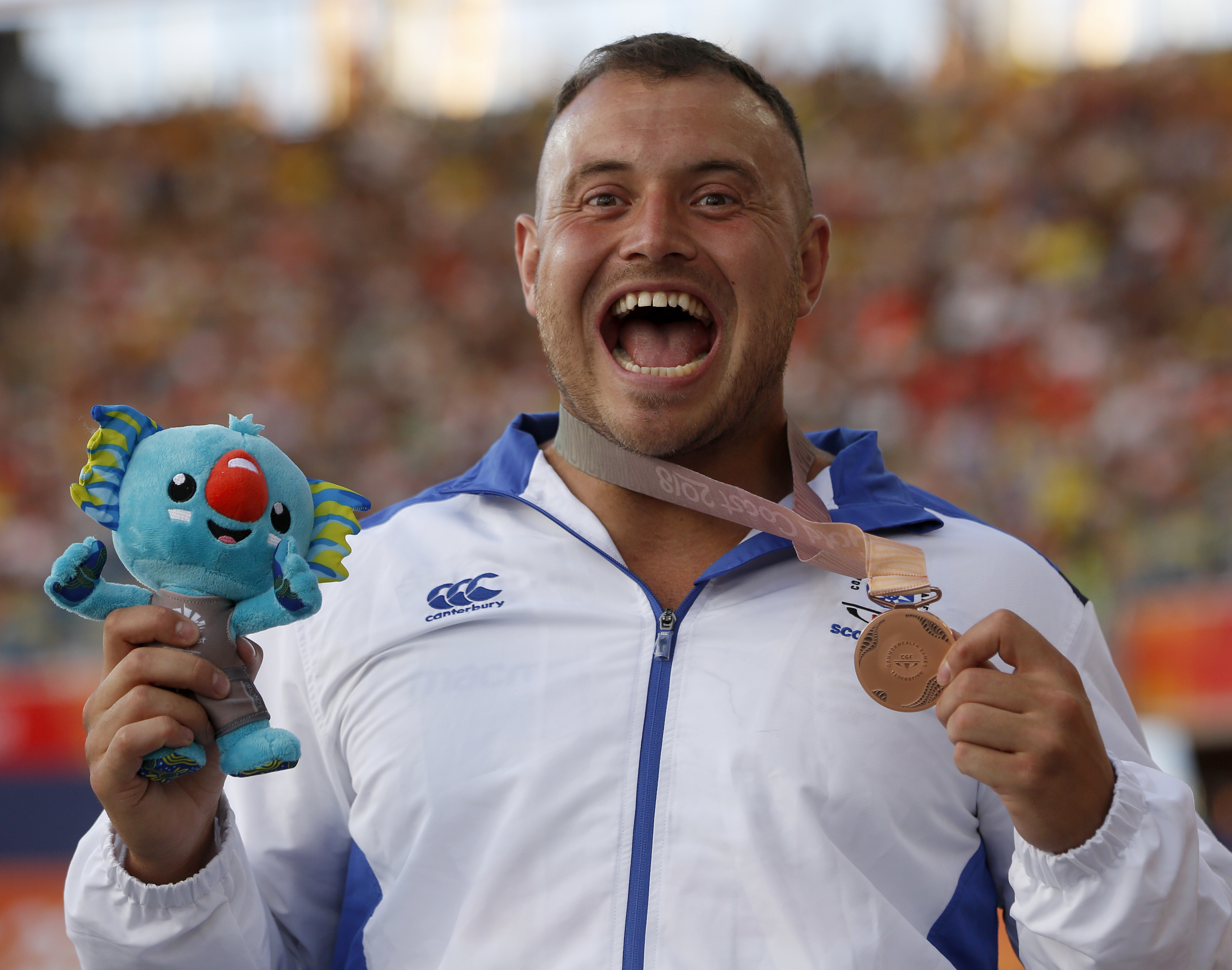It's almost as easy as sending a text: Open an app on your cellphone, type in a few words, click a box or two.
To really make the system work, though, athletes have to be where they say they'll be at the time they say they'll be there.
Lately, some high-profile names in track and field have been making a mess of what's supposed to be a simple process of letting drug testers know where they will be for one hour each day.
World champions Christian Coleman and Salwa Eid Naser could miss the Olympics next summer in Tokyo for what are known in the antidoping world as whereabouts failures - the failure to be where they said they would be when testers came calling, unannounced, to collect a urine or blood sample. It's part of a system of no-notice, out-of-competition testing that is considered the best deterrent to illicit drug use in sports.
Other recent cases - one involving a Scottish hammer thrower who said he was fishing when he really went to see his mom, another involving a Russian high jumper whose whereabouts forms were forged by team officials - have only heightened the feeling that a routine piece of bookkeeping can be anything but that. They've also placed the taint of doping on athletes who haven't tested positive, but are nonetheless accused of breaking the rules.
The cluster of recent cases runs contrary to the reality that most athletes have very little problem keeping their whereabouts information current, then being where they say they'll be. Since early 2001, when the United States Anti-Doping Agency's whereabouts system began, there have been 21 whereabouts sanctions out of 175,000 completed tests. That's 0.00012%. USADA said it finds athletes 88% of the time on the first try.
Global numbers tell the same story. In 2018, for instance, there were a total of 34 whereabouts violations among a worldwide pool from 20,000 to 30,000 athletes (the number changes from season to season), virtually all of whom are tested multiple times during a single year.
"Just respect the hour slot, be where you need to be," British race walker Tom Bosworth told the Associated Press in an email, referencing a time he interrupted his beach vacation to wait in a hotel for testers. "If athletes are missing more than three, then simply for respect and integrity of sport, they shouldn't be anywhere near the top level of sport."
Coleman is face-to-face with that possibility.
Courting trouble
Coleman, the reigning 100-meter world champion, is an Atlanta native and former University of Tennessee standout.
He has been battling the whereabouts system for more than a year now. His latest incident, made public this month, happened Dec. 9, when he said he was out Christmas shopping as testers arrived at his residence. It marked his third infraction in a 12-month period, which drew a provisional suspension that threatens his eligibility for next year's rescheduled Tokyo Games.
Coleman's latest case brought a flurry of Monday morning quarterbacking from the track and field world, much of it on social media.
American distance runner Kara Goucher, long an outspoken advocate for clean competition, posted on Twitter her "Top 3 tips on how to not miss a doping test: 1. YOU pick your guaranteed window. Pick an hour you KNOW you'll be home. (Ex: 6AM). 2. Set a recurring daily alarm 15 minutes before your hour window. 3. Hire someone to call you everyday before your window. You're welcome."
Many athletes meticulously plan their itinerary weeks in advance. Since her children get up early, American distance runner Stephanie Bruce makes sure she's available at 6 a.m. If she has a workout early in the morning, she changes the time.
Athletes can also be tested outside their primary window, which is why they give detailed accounts for the day (5 a.m. to 11 p.m.). If, for example, Bruce goes on a long training run, she will record that so everyone knows she will be difficult to reach during that block.
Bruce said she was tested 10 times in 2019.
"And I haven't won a medal. I haven't made an Olympic team," she said. "It shows they're doing their job."
The whereabouts system came under a uniform global protocol in 2009. Since then, it has become more streamlined with each passing year. These days, virtually all athletes have access to an online portal or an app on their phone that allows them to input and update their whereabouts data. The apps allow athletes to opt in for daily reminders about the information they've provided.
"The expectation is that if an athlete has a first strike, he or she will be doing more than what's necessary to make sure they don't have a second one," said Stuart Kemp, the World Anti-Doping Agency's expert on whereabouts. "And if they get a second one, that should be a real wake-up call."
After his latest missed test, Coleman lashed out on social media, arguing the situation could have been avoided had testers simply called him, as they had done in the past. Calling an athlete is not required, though - and, Kemp said, the calls are not designed to give athletes a last chance.
"It's more about validating that they're really not where they said they were going to be," he said.
Other cases
Coleman isn't the only athlete whose Olympic hopes are in limbo.
Naser won the wome's 400 at last year's world championship meet, running the fastest time since 1985, but more recently was suspended for a series of whereabouts failures, three of which occurred before the world meet.
It led some to wonder why, with three strikes already on her record, she was allowed to race. The Athletics Integrity Unit, which is prosecuting the case on behalf of World Athletics, has offered little insight, other than to say the investigation was ongoing when the meet began and that after a fourth whereabouts failure in January, she was provisionally suspended.
In many respects, whereabouts challenges aren't unlike other aspects of the anti-doping world: The application of the rules are often only as good as the anti-doping agencies that enforce them.
On the one hand, the curious instance of Scottish hammer thrower Mark Dry has drawn attention because of the United Kingdom Anti-Doping Agency's dogged pursuit of a case that seemed an example of nothing more than a slight mistake. The UKAD sought a tampering charge, which brought with it a four-year doping ban; most whereabouts violations result in bans of two years or less.
On the other hand, the Russian track federation, already suspended for a cheating scheme that ensnared the country's entire Olympic program, acknowledged this year that it had forged whereabouts documents for top high jumper Danil Lysenko. The revelation led to the resignation of the federation's president and penalties for other leaders, along with a $5 million fine.
In a different twist on the whereabouts matter in Russia, a WADA report in 2016 said foreign testers, who ran the country's anti-doping program while Russia's agency was under suspension, were unable to reach athletes training in "closed" cities where outsiders aren't allowed. It contributed to 23 missed tests, 111 whereabouts failures and 736 tests that were declined or canceled.
The latest headlines haven't involved any allegations of state-sponsored corruption. Still, with the cases piling up, the obvious question - one Coleman seems to be asking as his Olympic hopes have become imperiled - is whether there could be a better way.
Answer: At this point, no.
"It's a necessary part of ensuring a level playing field," USADA CEO Travis Tygart said. "If there were any other way, we certainly would be pushing for it. But there's not."


